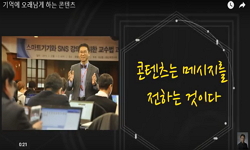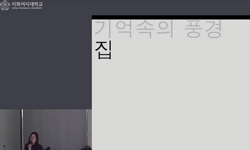디그나가는 『집량론』과 자주(Pramamasamucchayasvavrtti, PSV) 직접지각 장 kk. 11-12에서 지식이 한 찰나에 두 가지 형태의 형상을 가지는 근거를 서술하면서 기억(smrti)을 예증의 형식으로 언급하고 ...
http://chineseinput.net/에서 pinyin(병음)방식으로 중국어를 변환할 수 있습니다.
변환된 중국어를 복사하여 사용하시면 됩니다.
- 中文 을 입력하시려면 zhongwen을 입력하시고 space를누르시면됩니다.
- 北京 을 입력하시려면 beijing을 입력하시고 space를 누르시면 됩니다.
https://www.riss.kr/link?id=A101741308
- 저자
- 발행기관
- 학술지명
- 권호사항
-
발행연도
2015
-
작성언어
Korean
- 주제어
-
등재정보
KCI등재
-
자료형태
학술저널
- 발행기관 URL
-
수록면
71-95(25쪽)
- DOI식별코드
- 제공처
-
0
상세조회 -
0
다운로드
부가정보
국문 초록 (Abstract)
디그나가는 『집량론』과 자주(Pramamasamucchayasvavrtti, PSV) 직접지각 장 kk. 11-12에서 지식이 한 찰나에 두 가지 형태의 형상을 가지는 근거를 서술하면서 기억(smrti)을 예증의 형식으로 언급하고 있다. 본고는 PSV의 해당 개소를 검토하고, 디그나가의 기억을 지넨드라붓디, 다르마키르티, 데벤드라붓디의 견해와 타학파의 반론을 함께 고찰하고자 한다.불교인식론에서 기억은 바른 인식수단(pramana)이 아니다. 즉 기억은 분별지에 속한다. 그럼에도 불구하고 그것이 일어나는 과정은 무분별지인 직접지각의 인식 과정과 일치한다. 디그나가는 직접지각과 기억을 지식이라는 점에서 동일한 인식구조를 갖는 것으로 파악한다. 따라서 그는 기억의 이상성을 증명하는 것에 의해서 지식의 이상성을 입증하고자 한다. 그에 의하면 기억은 반드시 경험한 지식에 의해서 일어난다. 경험한 지식이란 이전에 직접경험에 의해서 얻어진 지식이다. 그러므로 기억이란 어떤 특정한 것에 대한 지식을 다시 인식하는 것이다. 이 때 경험한 지식은 기억이 일어나기 직전의 찰나의 지식이다. 즉 기억을 일으키는 경험한 지식은 기억의 인식대상이 아니라, 그것의 등무간연에 해당한다. 디그나가는 만일 기억이 이상성을 갖지 않을 경우, 기억과 그것에 의한 재기억은 동일한 인식대상을 가질 수밖에 없다고 한다. 따라서 직전의 기억과 직후의 기억은 찰나를 달리함에도 불구하고, 아무런 차별이 없다는 것은 불합리하다고 지적한다. 이와 같은 기억과 재기억의 이상성의 논증은 어떤 지식의 인식대상과 그 지식을 등무간연으로 일어나는 지식의 인식대상이 차별될 수밖에 없다는 사실을 반증하는 것이다. 또한 이 반증이 바로 각 찰나의 지식이 스스로의 현현과 대상적 현현이라는 두 가지 형상들을 가지는 근거라고 주장한다.
다국어 초록 (Multilingual Abstract)
Dignaga mentions recollection(smrti) as an example for the reason that knowledge has the two forms(dvirupata) at one moment(ksana) in Pramanasamucchayasvavrtti I kk.11-12. This paper examines the passages comparing with the annotation of Jinendrabuddh...
Dignaga mentions recollection(smrti) as an example for the reason that knowledge has the two forms(dvirupata) at one moment(ksana) in Pramanasamucchayasvavrtti I kk.11-12. This paper examines the passages comparing with the annotation of Jinendrabuddhi, Dharmakirti, and Dvendrabuddhi and so on. Recollection is not the means of cognition(pramana),and it is categorized under the conceptual construction(kalpana). However, its process exactly equals to the generation process of direct perception which is non-conceptual cognition. That is to say, Dignaga understands both of recollection and direction perception have the same epistemological structure in a regard of both are knowledge. Therefore, he tries to prove the two forms of knowledge through showing that recollection has the two forms at one moment. According to him, recollection requires the knowledge that has already experienced. It means recollection is a kind of knowledge to re-aware to a specific knowledge. The specific knowledge is at the moment just before the moment that recollection is occurring. Thus, the specific knowledge is not the object of recollection, but the dependent origination without interval (pratityasamutpada) of recollection. Dignaga says if recollection does not have the two forms at one moment, the recollection and the re-awareness to it should share the same object of cognition, so that recollection and recollection immediately after do not have any differences, though the two recollections are at the different moment. To conclude, the examination that recollection has two forms shows the proof that knowledge at one moment has both of the appearance of the object and the appearance of itself.
동일학술지(권/호) 다른 논문
-
『니야야만자리』(Nyayamanjari)의 아트만 논증에서 열변용 이론에 대하여
- 인도철학회
- 박문성 ( Moon Seong Park )
- 2015
- KCI등재
-
설일절유부(說一切有部)에 있어서 사선근(四善根) -신(信)과 단선근(斷善根)과의 관계를 중심으로-
- 인도철학회
- 김경희 ( Kyung Hee Kim )
- 2015
- KCI등재
-
유식불교의 심리치료적 특징 고찰-선행연구 분석과 연구방향 모색-
- 인도철학회
- 박재용 ( Jae Yong Park )
- 2015
- KCI등재
-
- 인도철학회
- 야나로카 ( Athaudakande Gnanaloka )
- 2015
- KCI등재





 KCI
KCI KISS
KISS






